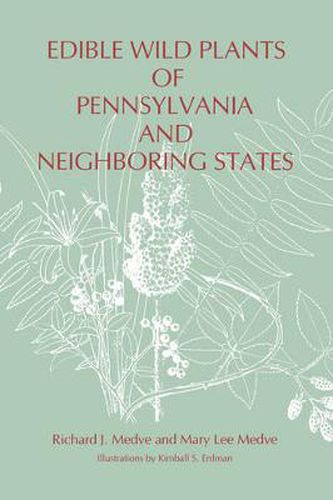Readings Newsletter
Become a Readings Member to make your shopping experience even easier.
Sign in or sign up for free!
You’re not far away from qualifying for FREE standard shipping within Australia
You’ve qualified for FREE standard shipping within Australia
The cart is loading…






Ralph Waldo Emerson defined a weed as a plant whose virtues have not yet been discovered. To the wild-plant enthusiast who has discovered the virtues of many plants, there are relatively few weeds. After using this book, you will never again consider lamb’s-quarters a weed. Instead, you will nurture it with respect and even encourage its growth in your garden. Edible Wild Plants of Pennsylvania and Neighboring States contains botanically accurate, up-to-date information essential for the identification of more than one hundred delectable wild plants. Each plant entry provides characteristics, habitat, distribution, edible parts, food uses, precautions, and preparation, followed by tasty recipes and interesting remarks about the plant’s botanical history. The plants are arranged according to height, with the ground-huggers appearing first and the trees last. Each plant is also cross-referenced by common and scientific names. The authors have written this book with the novice forager in mind, including useful tips on foraging from where to search for food to precautions to take. They also provide a list of toxic look-alikes, a nutrient composition chart, and a glossary of terms.
$9.00 standard shipping within Australia
FREE standard shipping within Australia for orders over $100.00
Express & International shipping calculated at checkout
Ralph Waldo Emerson defined a weed as a plant whose virtues have not yet been discovered. To the wild-plant enthusiast who has discovered the virtues of many plants, there are relatively few weeds. After using this book, you will never again consider lamb’s-quarters a weed. Instead, you will nurture it with respect and even encourage its growth in your garden. Edible Wild Plants of Pennsylvania and Neighboring States contains botanically accurate, up-to-date information essential for the identification of more than one hundred delectable wild plants. Each plant entry provides characteristics, habitat, distribution, edible parts, food uses, precautions, and preparation, followed by tasty recipes and interesting remarks about the plant’s botanical history. The plants are arranged according to height, with the ground-huggers appearing first and the trees last. Each plant is also cross-referenced by common and scientific names. The authors have written this book with the novice forager in mind, including useful tips on foraging from where to search for food to precautions to take. They also provide a list of toxic look-alikes, a nutrient composition chart, and a glossary of terms.